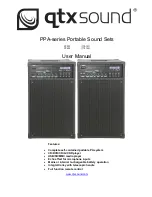
C
omrex
C
orporation
68
Before deployment of the Traversal Server, the answer to this dilemma
has been to assure that the codec located in the studio has a fixed, public
IP address. By fixed, we mean that the address is allocated exclusively by
the ISP, and that address is entered manually into the configuration of the
codec and not subject to change. This scenario works because IP “calls”
are usually initiated from the field. As long as the field unit can find the
fixed address of the studio unit and send a stream to it, a reverse channel
can be created easily and automatically by the studio unit using the source
information contained in the incoming packets. Of course, even in this
scenario the studio IP address must be memorized or input into each
codec individually.
The first function of the Traversal Server works around the dynamic IP
address problem by acting as a Directory Server. Codec users simply log
in to the free server and are given an account name and password. Once
logged in, it’s a simple process to input the details of each codec owned.
On the codec itself, the user will input a familiar name by which the codec
will be known within that group. See the
c
onFIgurIng
S
WItchboArd
t
rAverSAl
S
erver
section for instructions on how to log in to the server.
Figure 35 - The Effect of NAT
















































